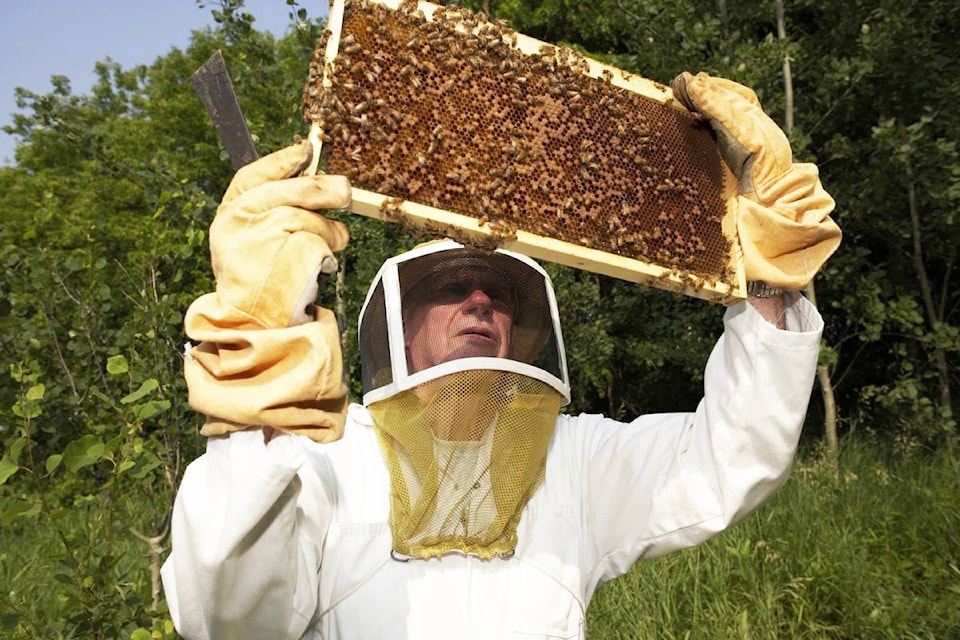Honey bees could eventually take flight in the more urbanized parts of the North Okanagan’s electoral areas.
The Electoral Area Advisory Committee recently discovered that beekeeping is not permitted in most residential backyards in the five electoral areas but such a use is allowed in Vernon.
“What? We’re all about agriculture and yet we can’t keep beehives?” said Mike Macnabb, BX-Silver Star director.
Presently, honey bees for domestic and commercial purposes are only allowed in residential zones where the lot is one hectare in size or greater.
In Vernon, bylaws were changed to allow urban beekeeping on smaller residential lots.
Regional District of North Okanagan staff have been instructed to explore the possibility of an urban bee bylaw for smaller residential lots in the five electoral areas.
“We want to be compatible and especially when we’re in the business of agriculture,” said Macnabb.
It’s believed the ban on urban bees was implemented years ago because of the perception that bees posed a risk to residents.
“Urban bee hives are OK and there is a net benefit,” said Macnabb.
“As times change, we have these little hiccups in our bylaws.”
In a report, staff indicate that pollinators, including honey bees, are critical to the life cycle of horticultural plants and agricultural crops.
“Urban beekeeping as a hobby can contribute to more productive harvests from backyard, street, rooftop and community gardens,” wrote John Friesen, bylaw enforcement officer.
“It is estimated that the pollination services provided by honey bees are often 60 to 100 times more valuable than the market price of honey. In terms of biodiversity, as pollinators, honey bees contribute to the production of fruit, vegetables and seeds which then provide a food source for birds and other insects, contributing to the health and biodiversity of the urban environment.”
